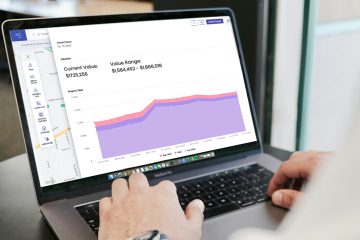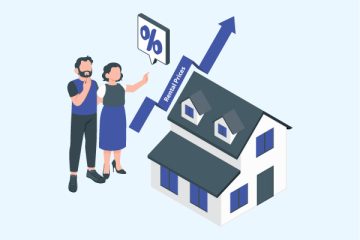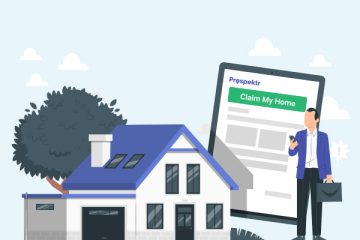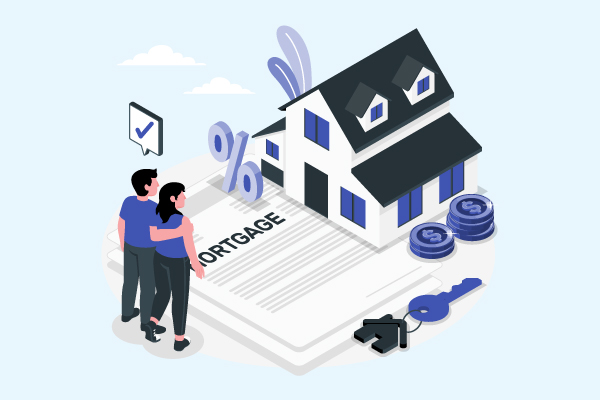Real estate investments that meet the following two criteria help you grow your equity in the property without you contributing anything to the equity.
- You rent the investment property
- You take a mortgage to buy the property
We will explain this using an example that compares ownership of a primary home versus owning a rental real estate.
Property in which you live – your primary residence
Consider you buy your primary home in which you live for $100,000. To buy the property you make a down payment of $20,000 and take a mortgage for the remaining $80,000. Below are additional details of the purchase.
Purchase Price: $100,000
Down Payment: $20,000
Mortgage Principal: $80,000
Mortgage Interest: 4%
Mortgage Term: 30 years
Monthly Mortgage Payment: $382
Assuming the value of your home grows by 3% per year, let us consider how much equity you will hold in the property at different times in the future and also the money you get to make by reselling the property.
| Year | Year 1 | Year 5 | Year 10 | Year 30 |
| Property Value | $103,000 | $115,927 | $134,392 | $242,726 |
| Mortgage Balance | $78,591 | $72,358 | $63,027 | $0 |
| Your Equity | $24,409 | $43,569 | $71,364 | $242,726 |
| Your Cash Outflow | $24,583 | $42,916 | $65,832 | $157,496 |
| Your Net Profit on Sale | -$174 | $653 | $5,533 | $85,231 |
Your Equity is the portion of the property you own and it is calculated as follows at the end of any year:
Equity = Property Value – Mortgage Balance
Cash Outflow is the total amount you spent out of your pocket on the property and it is calculated as follows:
Cash Outflow = Down Payment + (Number of Years * 12 * Monthly Mortgage Payment)
Your Net Profit on Sale is the money you made on the property at the time of sale.
Net Profit On Sale = Equity – Cash Outflow
Now let us compare that to buying the same home but renting it out.
Property that you buy and rent
Now let us consider that you buy the exact same property, but instead of living in the home you rent it out at a monthly rent that covers all your costs including the monthly mortgage payment.
Note that all the initial numbers look the same except that we add an additional number here for monthly rent.
Purchase Price: $100,000
Down Payment: $20,000
Mortgage Principal: $80,000
Mortgage Interest: 4%
Mortgage Term: 30 years
Monthly Mortgage Payment: $382
Monthly Rent: $1000 (or in other words covers all monthly costs including mortgage payments)
Now let us look at a projection of your equity over the years:
| Year | Year 1 | Year 5 | Year 10 | Year 30 |
| Property Value | $103,000 | $115,927 | $134,392 | $242,726 |
| Mortgage Balance | $78,591 | $72,358 | $63,027 | $0 |
| Your Equity | $24,409 | $43,569 | $71,364 | $242,726 |
| Your Cash Outflow | $20,000 | $20,000 | $20,000 | $20,000 |
| Your Net Profit on Sale | $4,409 | $23,569 | $51,364 | $222,726 |
The most important thing to notice in the above table is that your cash outflow is not increasing over the years. The only investment that you made is the down payment. This is true because you use the monthly rent you collect to pay the mortgage and all other expenses on the property.
While your equity in the property grows exactly the same as in the earlier case, you only spent $20,000 out of your pocket for that equity growth.
This enables you to collect $222,726 at the time of sale after 30 years compared to $85,231 from the same property.
In addition, we are also assuming that there is no net cash flow generated as income for you during the 30 years. But in fact you could generate income and still not pay any taxes over those years, which would add to your net profit over the 30 years.
In summary, a rental real estate investment can help you grow equity with no extra money out of your pocket as long as you are able to collect enough rent from a property to cover your expenses including monthly mortgage payments.
Latest Blogs

AVMs to custom CMAs: A Comprehensive and Integrated approach to Client Engagement
Real estate technology has experienced and continues on a journey of massive transformation driven by data, artificial intelligence, and computer…
Read more
Investors in Real Estate: An Opportunity for the Local Agent
The rental market has grown rapidly since the pandemic and rental prices are nearly 30% higher than they were before…
Read more
Building long-term client relationships with “Claim My Home”
The real estate industry is inherently built on relationships, and successful real estate agents and brokers understand the importance of…
Read more


